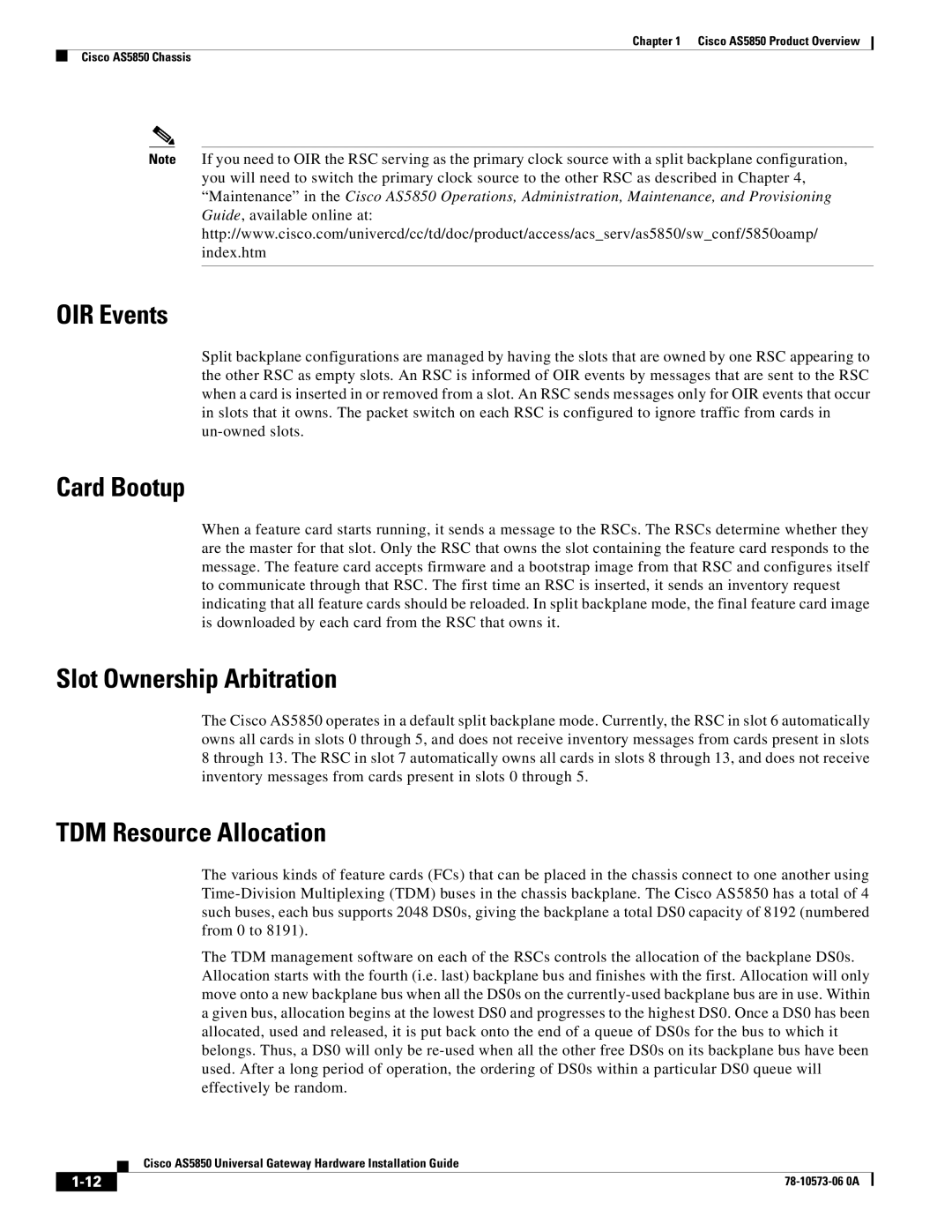
Chapter 1 Cisco AS5850 Product Overview
Cisco AS5850 Chassis
Note If you need to OIR the RSC serving as the primary clock source with a split backplane configuration, you will need to switch the primary clock source to the other RSC as described in Chapter 4, “Maintenance” in the Cisco AS5850 Operations, Administration, Maintenance, and Provisioning Guide, available online at: http://www.cisco.com/univercd/cc/td/doc/product/access/acs_serv/as5850/sw_conf/5850oamp/ index.htm
OIR Events
Split backplane configurations are managed by having the slots that are owned by one RSC appearing to the other RSC as empty slots. An RSC is informed of OIR events by messages that are sent to the RSC when a card is inserted in or removed from a slot. An RSC sends messages only for OIR events that occur in slots that it owns. The packet switch on each RSC is configured to ignore traffic from cards in
Card Bootup
When a feature card starts running, it sends a message to the RSCs. The RSCs determine whether they are the master for that slot. Only the RSC that owns the slot containing the feature card responds to the message. The feature card accepts firmware and a bootstrap image from that RSC and configures itself to communicate through that RSC. The first time an RSC is inserted, it sends an inventory request indicating that all feature cards should be reloaded. In split backplane mode, the final feature card image is downloaded by each card from the RSC that owns it.
Slot Ownership Arbitration
The Cisco AS5850 operates in a default split backplane mode. Currently, the RSC in slot 6 automatically owns all cards in slots 0 through 5, and does not receive inventory messages from cards present in slots 8 through 13. The RSC in slot 7 automatically owns all cards in slots 8 through 13, and does not receive inventory messages from cards present in slots 0 through 5.
TDM Resource Allocation
The various kinds of feature cards (FCs) that can be placed in the chassis connect to one another using
The TDM management software on each of the RSCs controls the allocation of the backplane DS0s. Allocation starts with the fourth (i.e. last) backplane bus and finishes with the first. Allocation will only move onto a new backplane bus when all the DS0s on the
| Cisco AS5850 Universal Gateway Hardware Installation Guide |
